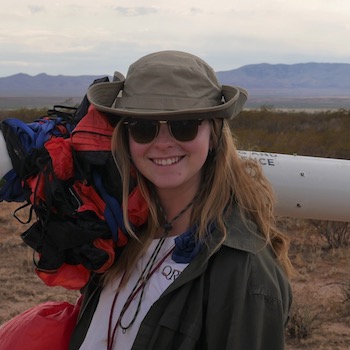
My Ironman preparation: zero to Ironman in 7 months
My journey from having no experience in endurance sports to running an Ironman
When I decided to train for an Ironman, I wasn’t coming in with a background in endurance sports; I was starting from scratch. For me, it wasn’t about chasing numbers or obsessing over the fanciest gear; it was about stepping away from the pressure and seeing what would happen if I simply tried to do something hard…and loving every second of it!
Considering doing an Ironman yourself? Setting a physical goal but not sure where to begin? Or just curious how crazy this whole thing is? There’s something here for you. And if you’re only here for the training plan (though I don’t recommend skipping my story), head straight to the paragraph titled ‘First Step: Setting Goals’.
What is an Ironman?
For those who don’t know, an Ironman is an ultra-endurance triathlon. Athletes complete in a 3.8 km (2.4 mile) swim, a 180 km (112 mile) bike ride, and a marathon (42.2 km/26.6 miles) all in succession. It is considered one of the most difficult endurance events, and it is estimated that less than 0.01% of the population has completed one.
My Starting Point
When I came to MIT in September and joined the Triathlon Club, I hadn’t run more than a handful of times in nearly five years, but I was determined to finish an Ironman before the end of my first year of grad school. The odds weren’t in my favour. Just before setting this goal, I had struggled through a 36-minute 5K and nearly threw up afterward.
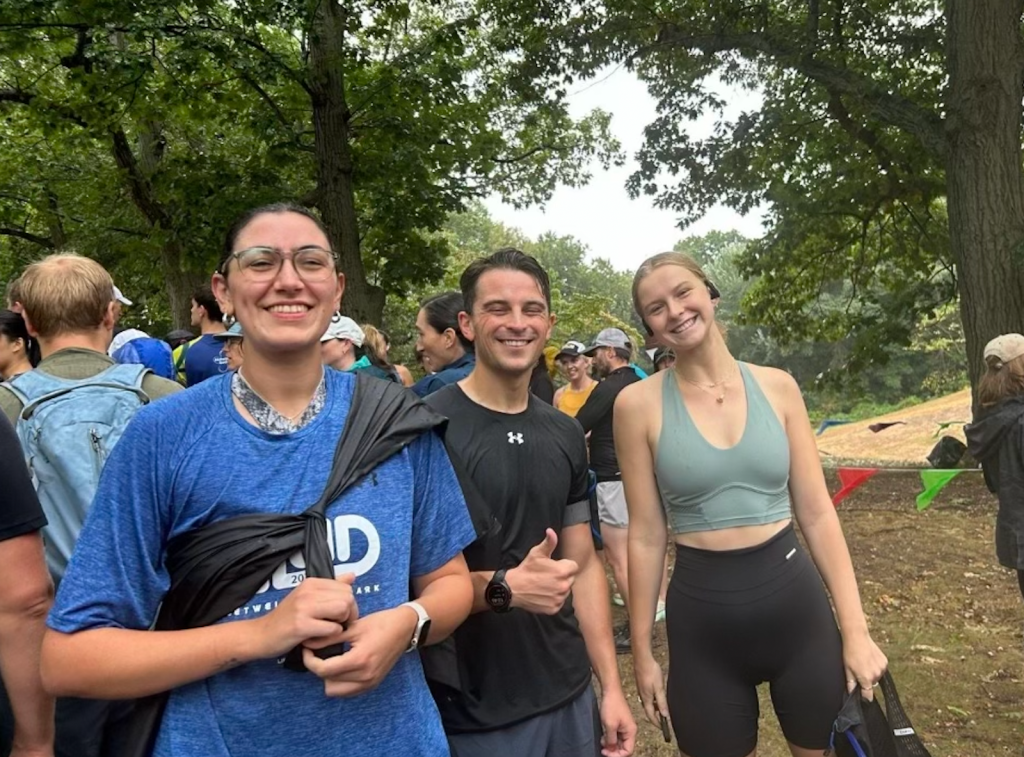
Running wasn’t my strength, and biking wasn’t either. I had never been on a road bike before and only bought one at the MIT police auction a few weeks into being at MIT. Swimming, at least, was familiar territory since I’d grown up swimming laps. I’m sharing this context for two reasons. One, I hope people who find themselves at the beginning of their journey can find comfort in my lack of experience. And two, where you start compared to me should greatly impact your perception of my training plan and how it might apply to you.
My Disclaimer
Before I’ll hop into my training plan, I insist on prefacing that I have little-to-no experience in endurance sports, have no formal education in the area, and get most of my knowledge from Reddit, random blogs, and folks I know. I’m lucky to have not experienced an injury that impacted my plans, and the key word here is LUCKY. Please take all of this into consideration as you read further.
First Step: Setting Goals
Although I don’t have a ton of athletic experience, I do have a lot of project management experience. The secret to a good project plan is basing it around the team’s goals. Applying this principle to my Ironman plan, I set my goal by answering the following questions:
1. What is my performance goal: finishing, or time oriented?
2. What is my ideal timeline?
3. How much time do I have to train each week?
4. Is my ideal timeline feasible with my performance goal and how many hours I can dedicate to training?
a. Going back to the marathon example, it is not feasible to run a Boston qualifying time in the marathon in four months with no running experience and only 5 hours free to train, regardless of whether that’s your goal time and ideal timeline.
With those questions in mind, I set my goal of finishing the Ironman in 5.5 months while maintaining some balance of training and social life. This goal helped me set paces and progressions as I built my training plan.
An important note about finishing an Ironman is that all racers have to meet intermediate and final cutoff times. The cutoff times are a bit strange, but I’ll break them down for my first race to give some context. For my race, all athletes had 2 hours and 20 minutes to complete the swim. Any athletes who hadn’t completed the swim in the allotted time were removed from the race and issued a DNF, ‘did not finish’. Then comes the bike. There were intermediate cutoff times for each lap, but for simplicity, I’ll stick to the cutoff for finishing. All athletes had 10 hours and 20 minutes from the start of their race to finish the bike section. This means athletes that took only 1 hour and 30 minutes for the swim could take 8 hours and 50 minutes for the bike; it’s all cumulative. Finally, the cutoff for the overall race was 16 hours and 45 minutes. These cutoffs were important to keep in mind because my performance in each discipline would impact how I needed to perform over the rest of the race. I kept this in the back of my mind as I progressed through my training.
Second Step: Baseline Measurements
To figure out where I was at, I performed some diagnostic sessions to see how far I was from where I needed to be.
First, the swim. I hopped in the pool and timed how long it took me to swim 1.5 km, roughly 40% of the overall distance. Coming in at 40 minutes put me well under the required pace for the swim cutoff. Thus, my goal for the swim was to stay consistent and try to get faster. Keep in mind, this diagnostic swim will look very different for different swimming abilities, don’t be deterred if you have a lot less experience.
Second was the bike. Since most of my training was going to be done on an indoor stationary bike, it was important to be able to compare my progress using the metric I’d be training on. For my baseline test, I spent an hour on the stationary bike in Zone 2. This would tell me my easily sustained wattage and give me a good, conservative estimate for average wattage for the race. I used this handy table for Watt to Speed approximations to estimate what my race speed would be and whether that would be fast enough to hit the bike cutoff given my worst-case swim time (spoiler alert: it was not). This part might be more difficult for people who are unsure of their swim times due to less experience. In this case, I’d advise being conservative and estimating you take the full time allotted for the swim, 2 hours and 20 minutes, and then calculate your minimum required bike speed and compare that to your baseline.
Lastly, the run. Based on the assumption that I would take the full time allotted for the bike, 10 hours and 20 minutes, I had to run a 6-hour and 25-minute marathon. I took my time from a recent 10K as I began to build my plan. At that pace, I would have over a two-hour buffer to add in some walking if I needed to. This meant the pace wasn’t an issue, but building endurance and logging miles would be important.
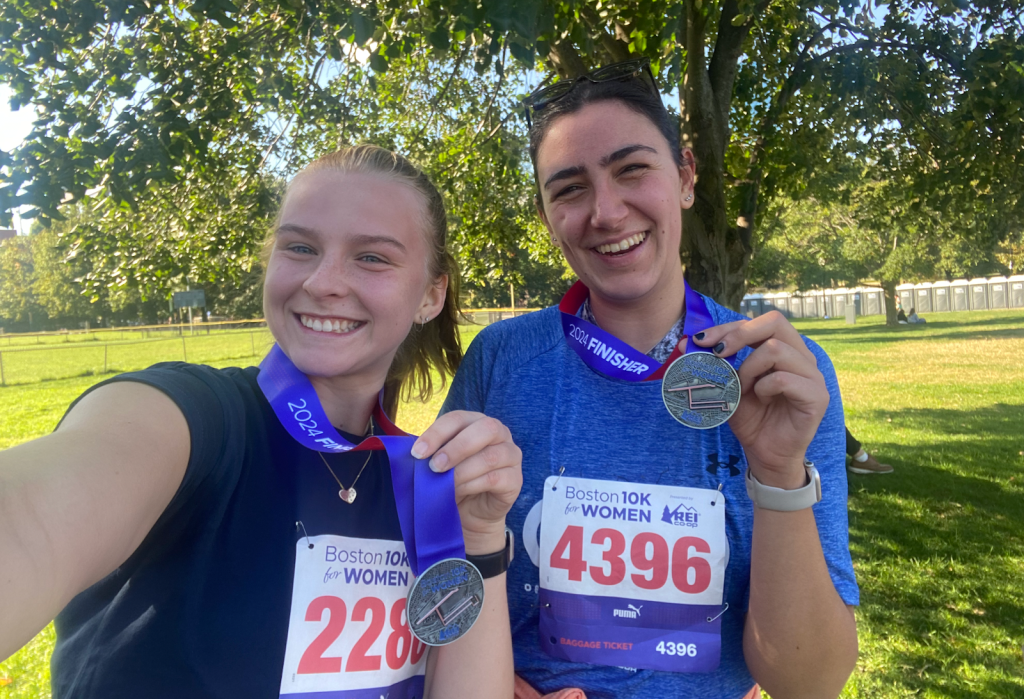
Third Step: Building the Plan
I had 1-2 hours that I could dedicate on weekdays and 3-5 hours that I could dedicate on Saturdays and Sundays. I also knew most of my focus would need to be on the bike. I chose to ask myself, “What’s the minimum amount of time I can dedicate to swimming and running so that I can spend the rest of my time on biking?”
I settled on two swim sessions and two run sessions each week in addition to one rest day. One of my run sessions would need to be on the weekend so I could execute my long runs. This left two weekdays for bike sessions and a weekend day for my long ride.
Something I fine-tuned along the way was putting my long bikes on the Saturday and long runs on the Sunday because my body was usually pretty sore and tired after the runs which affected my bike sessions. Try to think about how your body feels and if you can optimize the placement of workouts and rest days. Swimming is a fairly low impact sport and so it’s great to do as a recovery session.
I knew I needed to build both speed and endurance on the bike. The long rides would cover the endurance, so I settled on two speed sessions per week where I aimed for lower resistances and higher Watts (usually accompanied by higher heart rates and wayyy more sweat) and one hybrid session where I focused on bursts of speed or resistance followed by sections of Zone 2 for recovery and endurance practice. Here is where I remind people that I have no clue if this is what I should have done. I used the logic that if I needed to get faster and go further, then I needed to practice both while listening to my body after those sessions to gauge if I was on the right track. This might not be the most efficient way to approach training, but I wasn’t aiming to be the best athlete and I wanted to come out the other side with a balanced life and without injuries.
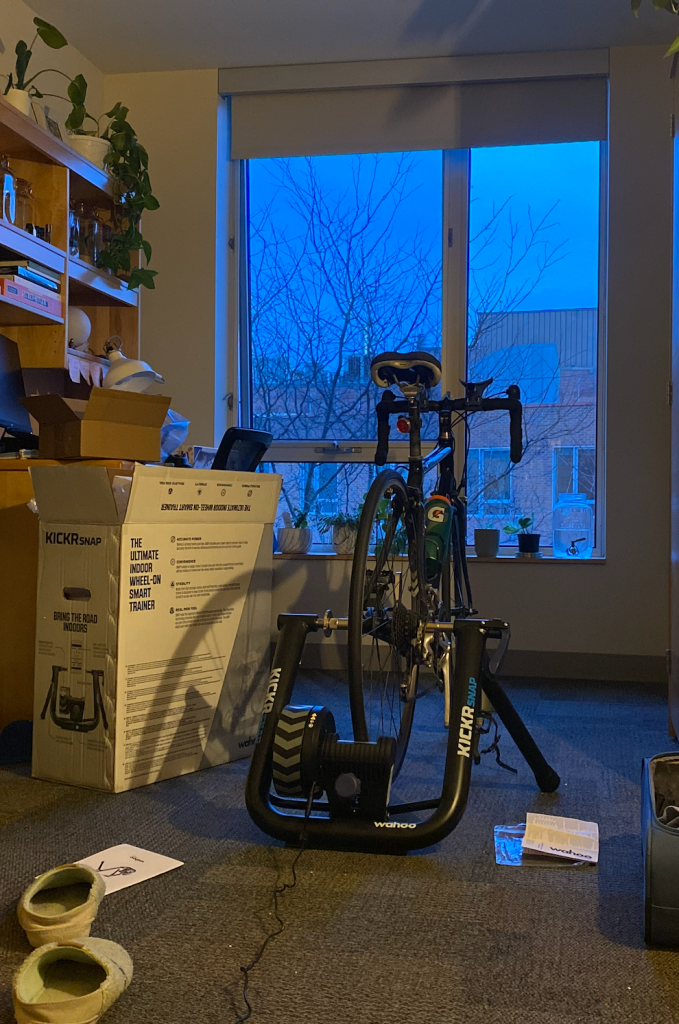
Here is a link to my week-by-week training plan for the first seven weeks: Phase 1: Can I do long distance?. Once I determined I could accomplish long distance, I began Phase 2: Let’s bike faster. These notes were edited at the end of each week to reflect what I actually accomplished. You’ll notice I wasn’t perfect and that’s where coming out with a balanced life came in.
Additionally, March training didn’t get checked off. During this time work ramped up, and training would have put additional, unhealthy stress on my body. Knowing this, and reminding myself that hard work won’t disappear in a few weeks, I pulled back on training to do what was right to stay healthy.
Fourth Step: Sticking to It (For the most part…)
At this point, I had my goal, my baseline, my plan, but I’d never done any of this before, so I needed to build my life in a way that encouraged me to stick to it. First, I set up checkboxes. My brain is addicted to checking those little boxes like Pac-Man chasing pellets. I looked forward to checking the boxes at the end of the day and seeing an accumulation of progress. I noticed that the weeks that I wasn’t remembering to check the boxes were also when I felt less motivated.
My next strategy was to surround myself with people who motivated me. As a social person, the Tri Team’s three weekly sessions were perfect to work into my plan. Being around fast, fit athletes chasing their own goals created an inspiring atmosphere that kept me motivated toward mine. On top of that, I could ask experienced teammates for advice anytime, which was an incredible wealth of knowledge at my fingertips.
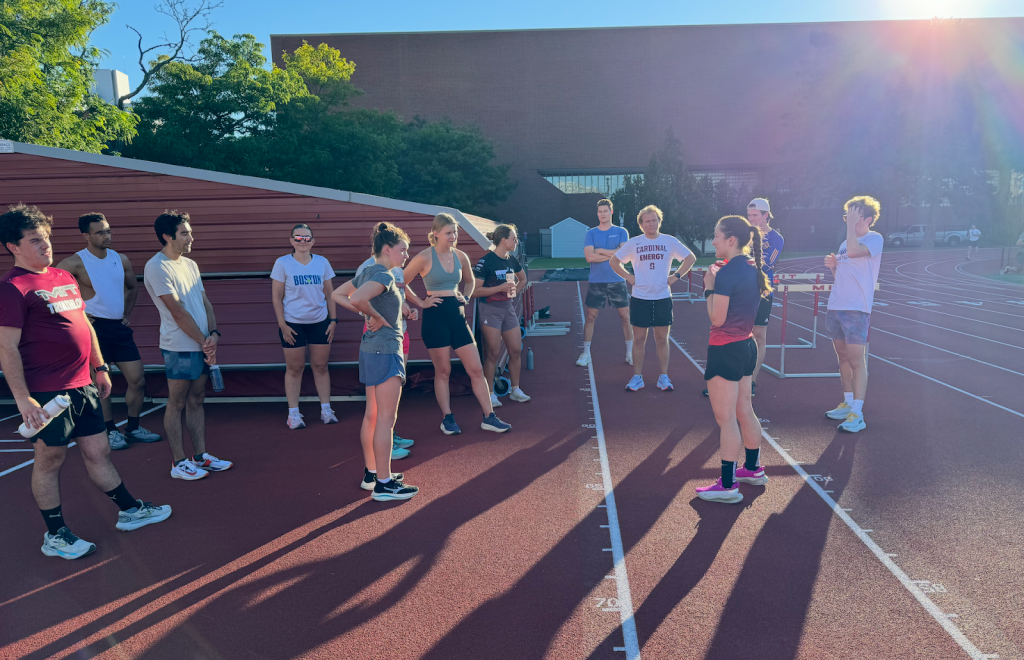
I also identified the pain points in my training plan; what was a blocker for motivation? Some good examples were my weekend long rides. Training through a Boston winter meant months of miserable 3–4 hour rides on my indoor trainer. To make it bearable, I turned it into guilt-free time to binge new shows or catch up with friends on the phone. Identifying your pain points and brainstorming ways to make them easier will help you stick to a plan.
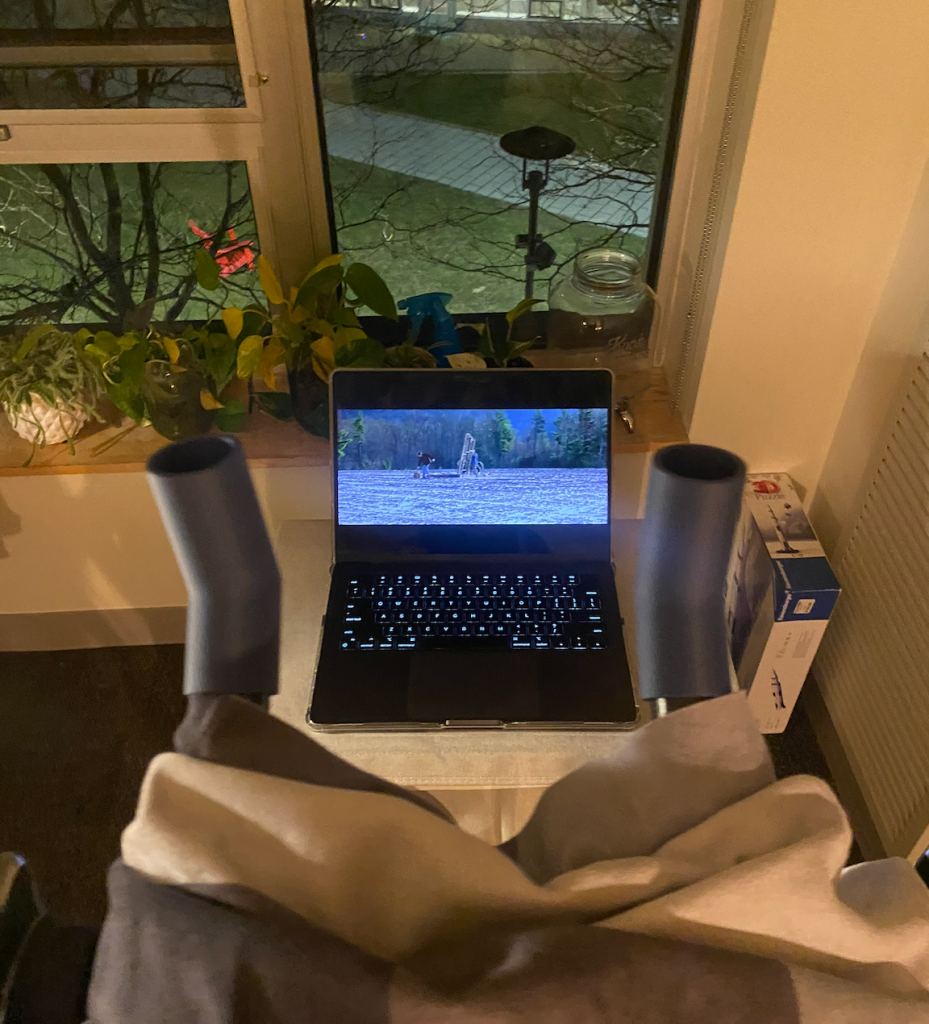
And lastly, I reminded myself of why I was doing all of it in the first place. I wanted to challenge myself to do something difficult and learn about myself along the way. There were plenty of hard days, but pushing through them made me a better person and it is the accumulation of those hard days where I saw so much growth.
Not only have I fallen in love with this sport and the Ironman community, but I’ve also enjoyed pushing myself physically when most of my life has been academically driven. I encourage everyone reading this to set a goal for themselves in an area of their life they normally don’t focus on. I promise you the journey to reach that goal will be so memorable and shape you in more wonderful ways than you can imagine. Oh, and, if this topic interests you, there will be more blog posts where this came from. I’m writing a whole series on my journey to breaking a world record and becoming the youngest woman to complete an Ironman on all 6 inhabited continents. More info on my Instagram: @a.bbyleee 💪🏻
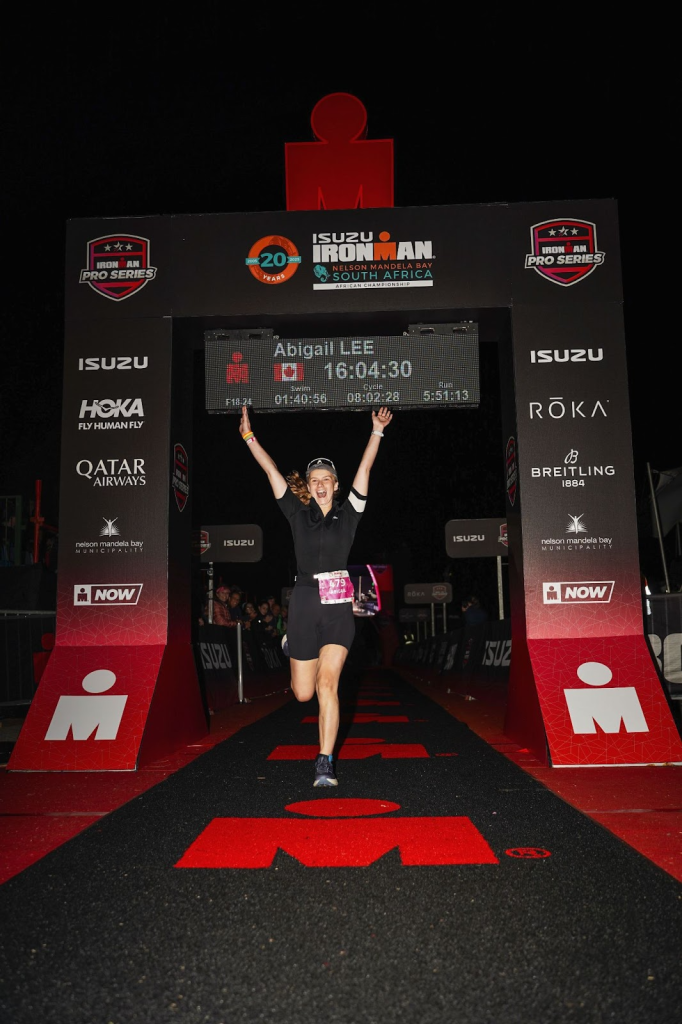
Share this post:
